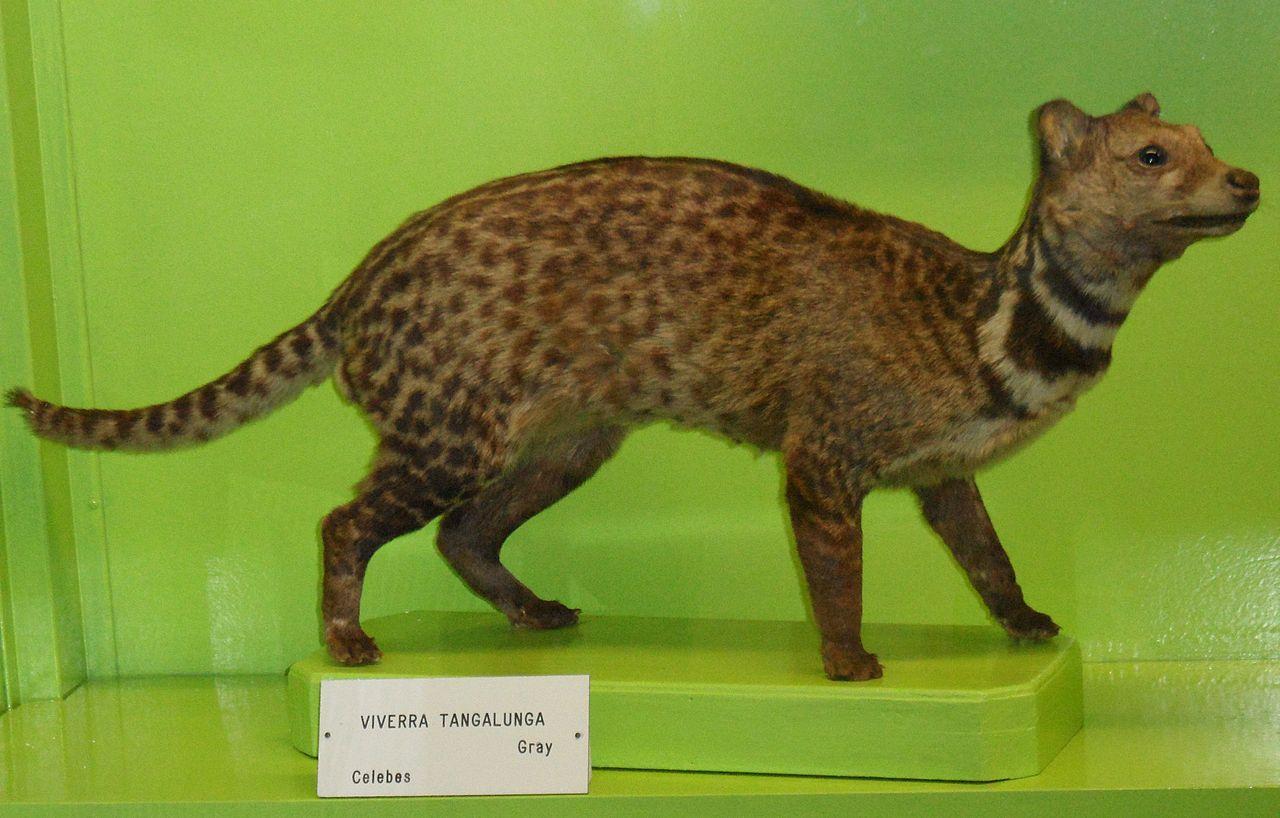
The Malay civet (Viverra tangalunga), also known as the Malayan civet or oriental civet, is a civet found on the Malay Peninsula and the islands of Sumatra, Bangka, Borneo, the Rhio Archipelago, and the Philippines.
Distribution
The Malay civet is known from the Malay Peninsula, Sumatra, Borneo, Sulawesi, Maluku Islands, and the Philippines. Locations without evidence of breeding populations include Java, where two specimens were recorded and Singapore, where a single individual was photographed in 2012. The Malay civet occurs in a wide variety of habitats including forests, secondary habitats, cultivated land and the outskirts of villages. Distributions on hill include elevations of up to 900m on Gunung Madalan in Sabah and 1,100m on Usun Apau and the Kelabit Upland in Sarawak.
Behaviour
Malay civets are mostly terrestrial but are known to climb up trees. Their upper parts are greyish with numerous black spots, tail with about 15 black bands. They feed on invertebrates and small vertebrates.
Conservation Status
The Malay civet is categorized as a species of "Least Concern" in the IUCN Red List of Threatened Species. This is due to the wide distribution and it occurs in a number of protected areas. A Malaysian study reports that the Malay civet was found only in recently logged forest, and not in forest regenerated after 20 years. They conclude that arboreal, frugivorous civets are little affected by logging, whereas terrestrial, carnivorous or insectivorous species might be negatively impacted by logging. Other studies report that densities of V. tangalunga were 57% higher in an unlogged site than in a logged one; and also that fruit comprised a larger proportion of diet in unlogged forest compared to logged forest. With fruit contributing a larger percentage of the diet in unlogged forests, logging may lead to increased competition by other frugivores such as palm civets which may exploit fruit directly on trees unlike the mainly terrestrial V. tangalunga.










